"An endeavour to preserve some memorial of the brilliant and fugitive beauties, of a particularly splendid and elegant tribe of plants, first gave rise to this work; and having enjoyed considerable, perhaps unusual, advantages, in the very great liberality with which specimens were supplied, both from public, and private collections, it became a favourite recreation, to describe them as simply and naturally as possible, with both pen and pencil.
Having no pretensions whatever, either to scientific knowledge, or extensive research, any attempt at a lengthened technical descriptions, is purposely avoided [...and the artist/author...] relies on the indulgence and courtesy of those more able and learned promoters, or generous admirers of botanical pursuits, who may be induced to patronize the feeble attempts, of an Amateur." [from the preface]

Amaryllis belladonna

Amaryllis correiensis

Amaryllis crocata
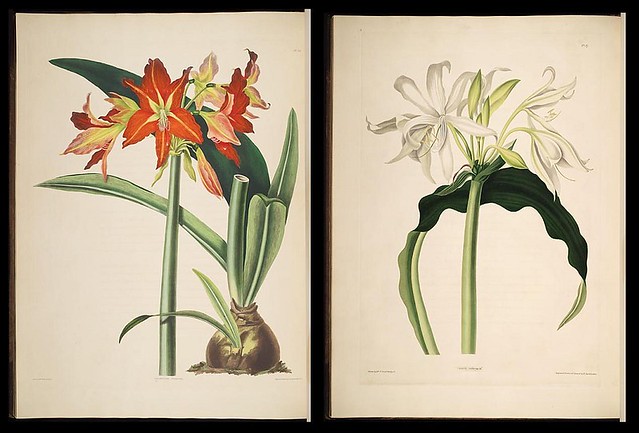
Amaryllis fulgida and Crinum giganteum
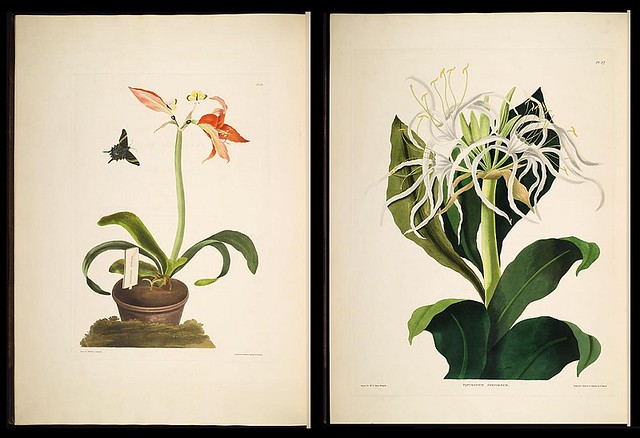
Amaryllis miniata and Pancratium speciosum

Amaryllis psittacina

Amaryllis solandriflora
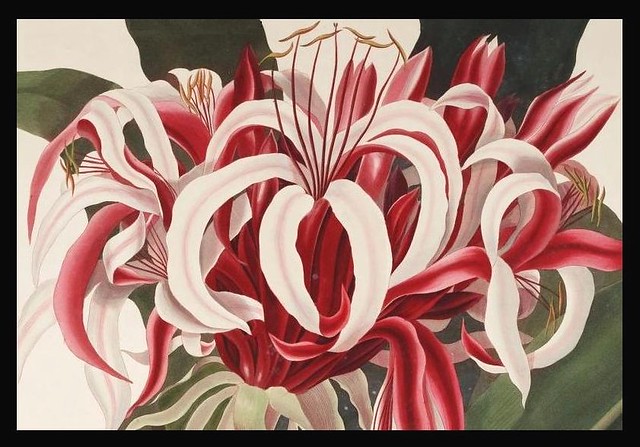
Crinum augustum
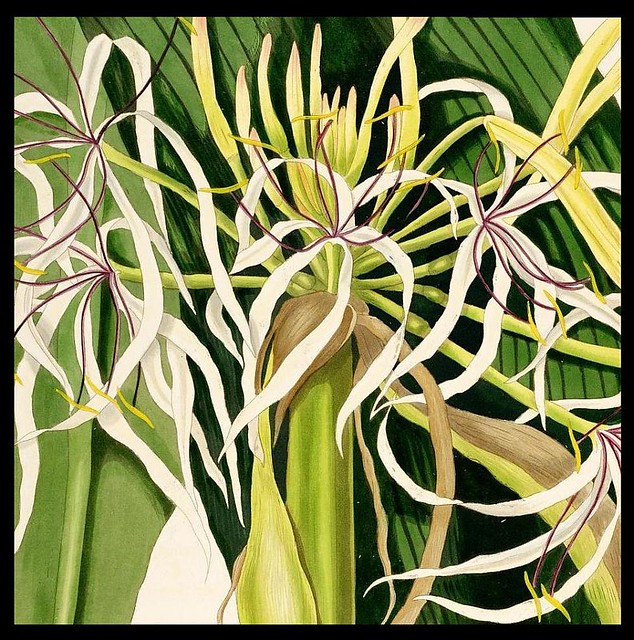
Crinum declinatum
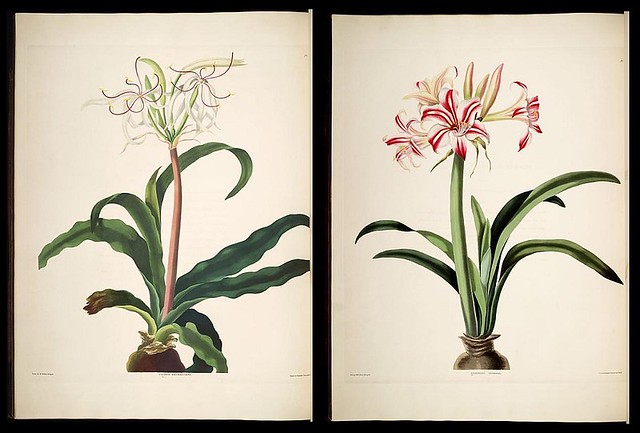
Crinum erubescens and Amaryllis superba
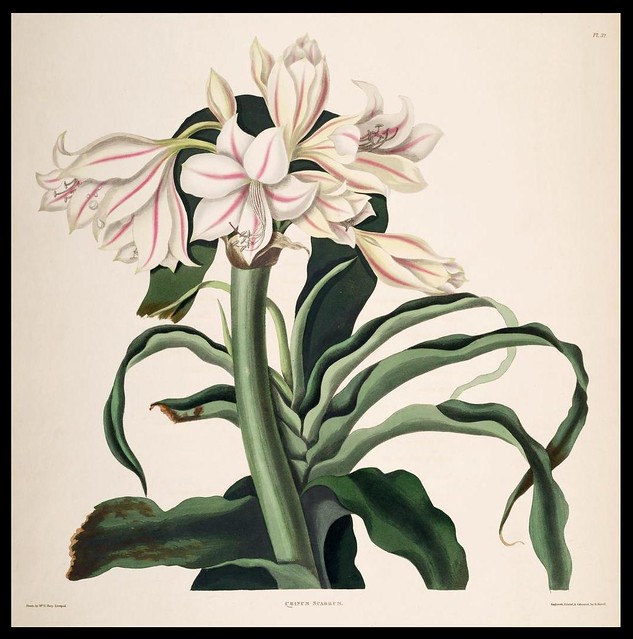
Crinum scabrum

Pancratium amboinense
Priscilla Susan Bury [née Faulkner or Falkner and often cited as 'Mrs Edward Bury'] (~1790s-1869) was a self-taught watercolour artist who sketched exotic plants from her father's greenhouses on their estate near Liverpool, England, where she grew up.
Encouraged by a local botanist, William Rowe, and enlisting the technical expertise of staff at the Liverpool Botanical Gardens to assist with the accompanying text, Bury set about preparing a book of fifty one 'portraits' (as she called them) of her favoured Hexandrian species. These are a Linnean class of plants having six stamens, including lilies, hippeastrums, crinums and pancratiums.
The partially hand-coloured aquatint engravings of Bury's drawings were produced by the workshop of Robert Havell, who were working on the plates for JJ Audubon's extravagant series, 'Birds of America' at the same time. Audubon himself was one of the seventy nine subscribers to Bury's book which was released over three years beginning in 1831. The modest circulation numbers makes Bury's exquisite Hexandrian plant series a very rare and desired botanical publication. Not bad for an Amateur.
The only other works of note I discovered by Priscilla Susan Bury included artistic contributions to Benjamin Maund's 'Botanic Garden' and 'The Botanist' in the 1840s, but years later her drawings of microorganisms, including some Radiolaria, were published in a very early photographic plate book, 'Polycistins'.
'A Selection of Hexandrian Plants, Belonging to the Natural Orders Amaryllidae and Liliacae' is online at Botanicus, the Illustrated Garden, NYPL (easy to see all the plates) or the (new to me) commendable multinational collaborative Biodiversity Library. [all identical, save for the NYPL version]
The detail (as opposed to full page) illustrations above are all spliced together from screencaps and the age-related spotting and text bleed-through has been removed or subdued.
The chain: this post was largely inspired by an entry seen on the Princeton University Graphic Arts Division blog which was found through the Museum Blogs aggregator site which is produced by the Ideum group who are responsible for some significant web projects.
Sources for this entry: i, ii, iii, iv, v.




No comments:
Post a Comment